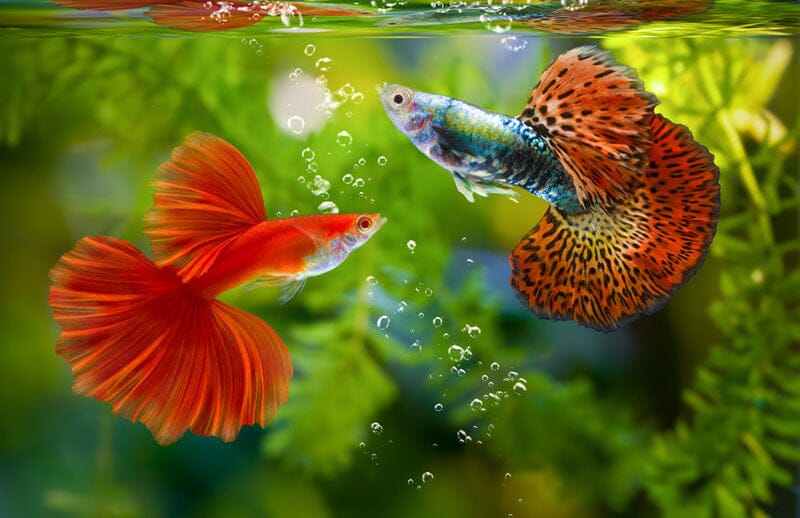Bio media—these two words represent a vital aspect of a healthy and thriving aquarium environment. It is the secret sauce to an optimal aquatic ecosystem, allowing hobbyists and enthusiasts to maintain their underwater paradise effectively.
For those uninitiated in the aquarist world, it might seem like a complex term. But in reality, understanding bio media is all about understanding nature's way of maintaining balance.
Understanding Bio Media
Bio media is essentially a home for beneficial bacteria. These bacteria are vital in breaking down harmful waste materials in your aquarium, such as ammonia, nitrites, and nitrates, into less harmful substances. This process is often referred to as the nitrogen cycle, a biological process that keeps your aquarium healthy. Choosing the right bio media is a pivotal step in creating an ideal living environment for your fish and other aquatic life.
Factors to Consider When Choosing Bio Media
The choice of bio media depends on several factors that differ from one aquarium to another. The size of your aquarium plays a significant role, along with the type of aquarium—be it freshwater, saltwater, or reef.
Moreover, the types of fish and other aquatic life present and the overall bio-load (amount of waste produced) can influence your bio media choice.
Overview of Different Types of Bio Media
The market is flooded with different types of bio media, each with their unique properties and advantages. The key is to understand your aquarium's needs and select the one that suits you best.
- Ceramic Rings: These are highly porous and provide an ample surface area for beneficial bacteria to grow. They're excellent for freshwater and saltwater aquariums and are known for their durability.
- Bio Balls: Initially conceptualized for the filtration of ponds, bio balls offer a lightweight, user-friendly solution that is perfect for wet/dry filters. However, one limitation is their inability to house denitrifying bacteria, which is essential for nitrate reduction.
- Sponges/Foam: Playing a dual role in mechanical and biological filtration, sponges are an ideal choice for smaller aquariums with low bio-load. They foster an exceptional habitat for beneficial bacteria.
- Lava Rocks: An economical and natural selection, lava rocks offer an extensive surface area for bacterial growth. However, their high porosity might necessitate regular cleaning.
- Plastic Bio Balls: Echoing the design of traditional bio balls but made with minuscule plastic components, these are apt for larger aquariums, thanks to their vast surface area.
- Matrix Media: Characterized by its high capacity, Matrix media hosts nitrifying and denitrifying bacteria. It's a premier choice for densely populated aquariums with aquatic life.

Comparing Different Bio Media Types
When comparing bio media types, consider their surface area, lifespan, cost, and how they affect the nitrogen cycle in your aquarium. No one-size-fits-all solution exists; hence, understanding your aquarium's unique requirements is key to making the right decision.
The Impact of Bio Media on Aquarium Filtration
Bio media significantly affects aquarium filtration by fostering biological filtration—the process of beneficial bacteria breaking down harmful waste. But it's worth noting that different bio-media types can influence chemical and mechanical filtration.
For instance, sponges are excellent at trapping debris, and providing mechanical filtration, while some types of media, like activated carbon, also aid in chemical filtration by absorbing various contaminants.
Maintenance and Cleaning of Bio Media
Regular maintenance and cleaning of your bio media are essential to ensure its effectiveness. However, cleaning bio media gently without using chemicals or hot water is necessary, as these can kill off the beneficial bacteria. A gentle rinse in aquarium water usually suffices.
Expert Recommendations
Choosing the best bio media will depend on your specific aquarium setup. For larger aquariums with a heavy bio-load, matrix media is a top-notch choice, while sponges or foam might be suitable for smaller tanks. Ceramic rings are a popular, all-around option that works well in most setups.
Common Mistakes to Avoid When Using Bio Media
One of the common mistakes is over-cleaning your bio media. Beneficial bacteria take time to colonize, and overzealous cleaning can destroy them. Also, avoid stuffing your filter with too much bio media, restricting water flow and reducing efficiency.
Frequently Asked Questions
What is the importance of bio media in my aquarium?
Bio media hosts beneficial bacteria essential for breaking down harmful waste in your aquarium, keeping the environment healthy and balanced.
Which type of bio media is best for a small freshwater aquarium?
Sponge or foam media are often ideal for smaller freshwater aquariums due to their dual role in mechanical and biological filtration.
What's the difference between ceramic rings and plastic bio balls?
Ceramic rings are highly porous, offering ample space for bacteria, and work well in most setups. Plastic bio balls, with their vast surface area, are better suited for larger aquariums.
How often should I clean my aquarium's bio media?
It's important not to over-clean bio media, as beneficial bacteria need time to colonize. A gentle rinse in aquarium water during regular maintenance usually suffices.





